Technology is the backbone of today’s business landscape. From customer service to internal operations, reliable and secure IT systems are essential. But simply having technology in place isn’t enough — what’s needed is a cohesive IT strategy that fuels growth, strengthens security, and prevents disruptions before they impact your operations.
Enter strategic IT services built on three vital pillars: fractional CIO leadership, robust cybersecurity, and proactive IT management.
These core elements do more than just support business continuity — they align technology with business goals, help mitigate risk, and ensure operations continually run at peak performance.
1. Fractional CIO: Executive-Level Insight Without the Full-Time Commitment
A fractional Chief Information Officer (CIO) brings strategic IT leadership to your business without the cost of a full-time executive. This expert works alongside your leadership team to align IT with your company’s mission, streamline operations, and support innovation.
In many organizations, IT is reactive and viewed purely as an expense for troubleshooting issues. A fractional CIO changes that narrative, transforming technology into a forward-thinking asset that drives growth and efficiency.
Key Benefits of a Fractional CIO:
– Strategic alignment: Ensures your IT infrastructure and initiatives are directly tied to long-term business goals.
– Financial planning: Helps develop realistic IT budgets, prioritize tech investments, and guide vendor decisions.
– Risk identification: Highlights potential weaknesses such as outdated infrastructure, disaster recovery gaps, and compliance exposure.
– Unbiased guidance: Provides objective insights rooted in industry trends and best practices, avoiding trend-driven, costly decisions.
Without strategic oversight, businesses risk falling behind or misallocating IT resources. A fractional CIO provides the roadmap needed to ensure technology empowers, not hinders, growth.
2. Cybersecurity: Guarding Your Digital Assets
Cyber threats are now a daily reality. Ransomware, phishing, data breaches, and insider threats target businesses of every size and industry. Cybersecurity can no longer be treated as a reactive or optional measure.
A comprehensive cybersecurity framework integrates defenses across all areas of your organization — from network monitoring and endpoint protection to employee training, access control, and incident response planning.
Why Prioritize Cybersecurity?
– Escalating threat landscape: Attackers continue to develop more advanced and frequent tactics. Businesses that don’t keep up are particularly vulnerable.
– Data protection: Sensitive information including customer data, financial records, and intellectual property must be safeguarded. A breach can result in financial losses, regulatory penalties, and reputational damage.
– Customer trust: Demonstrating a commitment to protecting data builds loyalty and strengthens your relationship with partners and clients.
– Regulatory compliance: Industries like healthcare, defense, and finance are subject to strict cybersecurity standards such as NIST and CMMC. Failing to comply can come with steep consequences.
Cybersecurity isn’t a one-time project. It’s a continuous process of assessment, real-time monitoring, and employee engagement — creating a culture of vigilance and resilience.
3. Proactive IT Management: Stay Ahead of Disruptions
Proactive IT management focuses on detecting and preventing issues before they turn into costly problems. This includes activities like regular updates, security patches, system health checks, and scheduled maintenance — all of which reduce the likelihood of downtime and improve operational efficiency.
Instead of waiting for technology to fail and scrambling for emergency support, proactive management maintains stability and reliability around the clock.
Key Advantages of Proactive IT:
– Reduced downtime: Identifying and resolving potential issues early prevents costly outages and avoids employee frustration.
– Performance optimization: Keeps workstations, servers, and networks working efficiently, which boosts productivity.
– Strengthened security: Timely software updates and vulnerability patches protect against known exploits.
– Cost predictability: Ongoing maintenance helps businesses avoid expensive emergency fixes, data loss, or extended outages.
The benefits of a proactive strategy extend beyond IT operations — they positively impact employee satisfaction, customer experiences, and your bottom line.
Build a Strategic Foundation with Cytranet
The integration of a fractional CIO, strong cybersecurity, and proactive IT management creates a powerful foundation for any modern business. When these three pillars are in place, technology evolves from a behind-the-scenes utility to a primary driver of business growth and innovation.
At Cytranet, we specialize in helping small to mid-sized businesses establish and maintain IT environments that are secure, forward-thinking, and tailored to their unique needs. Rather than applying a one-size-fits-all approach, we partner with your leadership team to ensure IT becomes a strategic asset that supports every aspect of your operation.
Are these pillars fully built into your IT infrastructure? If the answer is unclear — or if your organization has been feeling the strain of outdated systems or constant IT issues — now is the time to solidify your foundation.
Cytranet offers the expertise, tools, and strategic vision you need to position your business for long-term success in a digital-first future.
Contact us today to schedule a conversation and learn how our comprehensive IT solutions can help you grow smarter, safer, and stronger.


